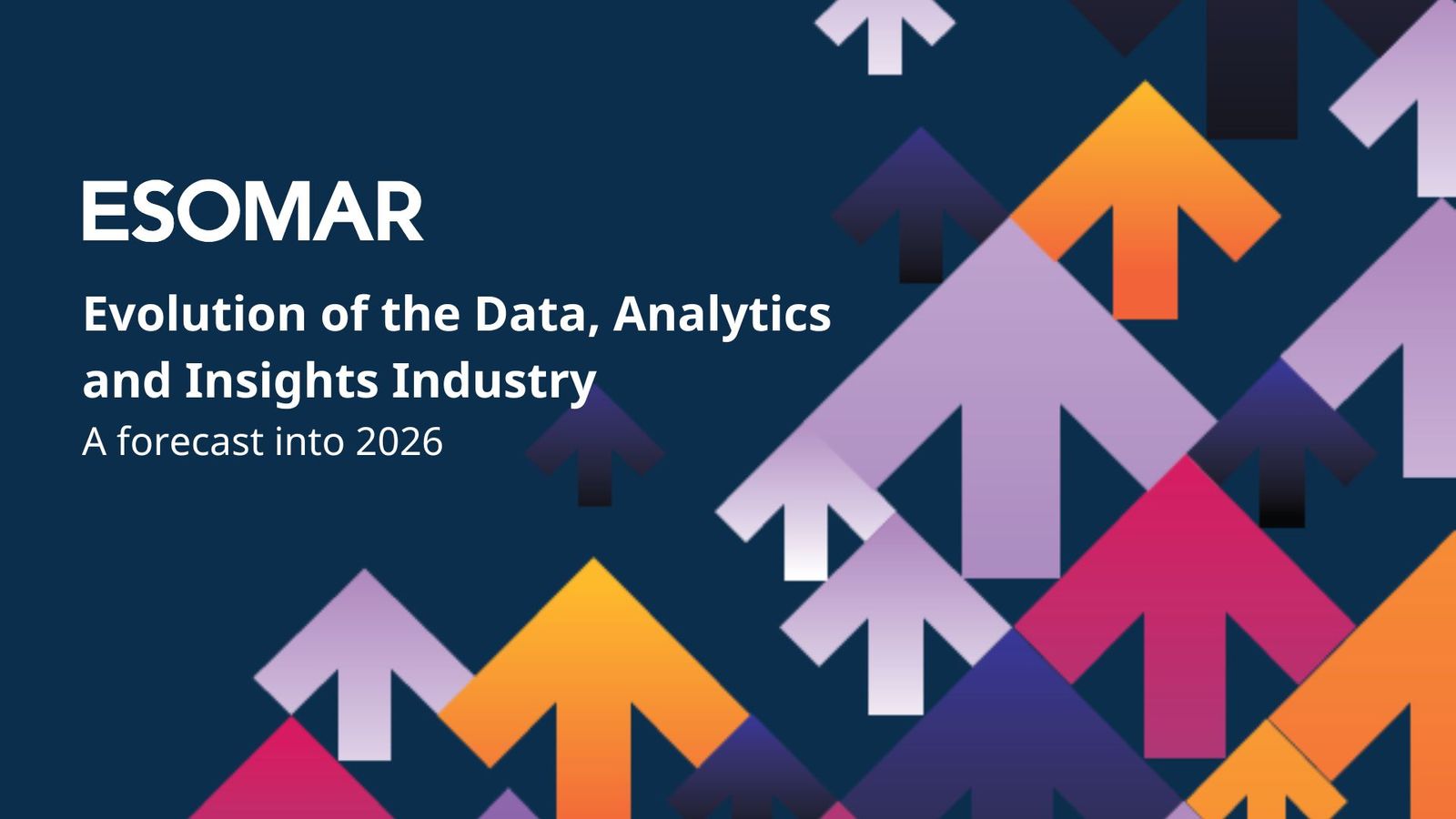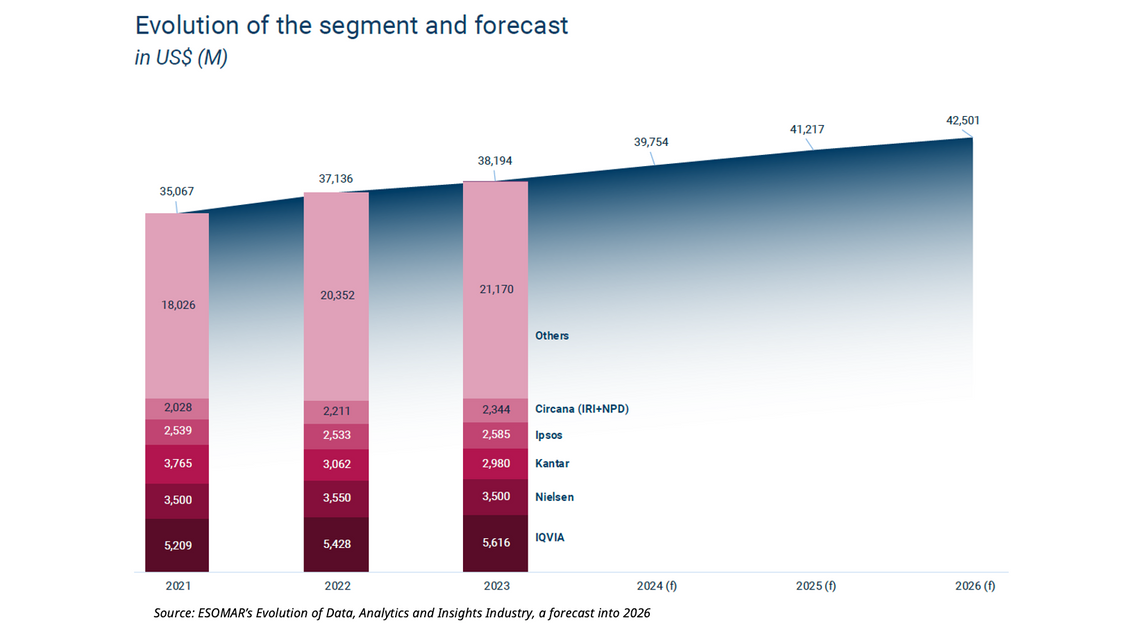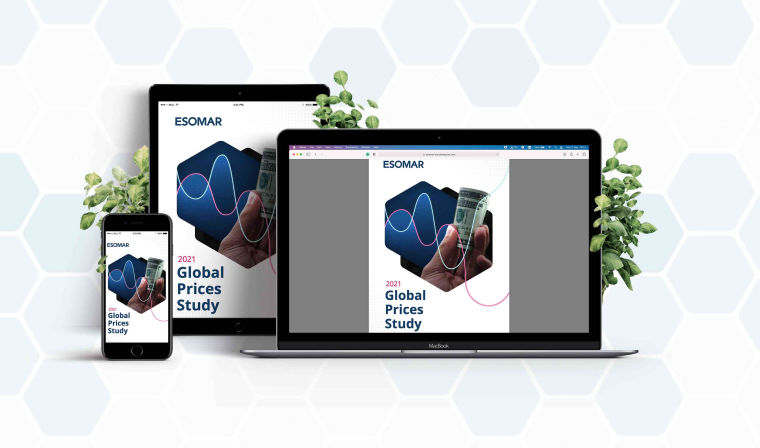Does tech herald the end of research as we know it?
An insider’s perspective of this integral segment of the insights industry

Article series
Evolution of the Data, Analytics and Insights Industry
- Does tech herald the end of research as we know it?
- Keeping up with the data quality challenges
- What are the roses and thorns in your path to embracing AI?
- Can self-serve research platforms and AI make everyone a researcher?
Are you seeking a comprehensive guide to shape your company’s strategy for the next three years? Look no further than ESOMAR’s Evolution of the Data, Analytics and Insights Industry, a forecast into 2026. This report offers not only qualitative insights but also data-driven projections to help you navigate the future of the insights industry. While we may not have a crystal ball, this report is the next best thing.
The following article is an excerpt from ESOMAR’s Evolution of the Data, Analytics and Insights Industry, a forecast into 2026.
The Established Market Research segment is comprised of organisations that have long been the foundation of the industry and now find themselves having to transform and adapt in the face of the unprecedented technological developments we have seen in recent years. The segment has evolved a lot over the years. Ruchika Gupta from Borderless Access echoes this sentiment.
Just a decade ago, we relied heavily on traditional surveys and focus groups for customer understanding. Now there is a shift towards an integrated approach — varied datasets are being synthesised to get a more holistic understanding of the consumers and marketplace.
There is also a rise in innovative data analytics tools to analyse massive datasets and uncover hidden patterns in consumer behaviour. This translates into richer insights for businesses, empowering them to make informed decisions that resonate with their target audience.
There is also a shift towards Software-as-a-Service (SaaS) models, making it easier for clients to conduct quick turn-around studies at their end.
Mobile technology has given rise to a whole new generation of global citizens. We, as market researchers, need to adapt to this interconnected world. Our research methodologies now consider consumers' diverse needs and preferences across borders, ensuring our clients can compete effectively on a global stage.
Ruchika Gupta

Juan Quiñones from MarketTeam discusses how, three decades ago, the entire industry comprised just this segment.
In 1994, established market research was not a segment. Indeed, market research was thought of as a unique kind of scientific research discipline encompassing certain methods, timing, and language. Every year, clients clamoured for more innovative, fast, and actionable projects. The research industry wanted to cope with those needs, but the lack of technology and very rigid academic standards made the evolution slower than expected.
With the advent of new information technology resources, the adoption of consultancy skills, and the growing interest in informed decisions, this industry has become dynamic, innovative, challenging, and futuristic, opening up to a wide number of approaches to solving different business problems.
Juan Quiñones
Knowing how the industry and the segment have evolved over the years, we were curious to know what is in store for the segment. Ruchika believes that significant change for the industry and the players will be delivered via Generative AI, Synthetic data, digital quantitative research, hybrid research and increased importance of social listening. Here are her thoughts on how Generative AI will be a game changer.
Generative AI (GenAI) has the potential to revolutionise how we gather and analyse data. AI-powered tools can automate tedious tasks, generate realistic consumer profiles for simulations, or even conduct basic interviews. This allows experts to focus on higher-level analysis and strategic interpretation, ultimately delivering deeper insights to clients.
Ruchika Gupta
Established Market Research segment, in turn, continues to respond to these changes. One such change, according to her, is mentioned below:
The ESOMAR 2023 report describes how the market research industry has been gradually shifting from traditional modes of research towards more agile and new modes of customer understanding. While traditional surveys are still very much in vogue, there is a clear trend in the adoption of new modes of customer and market understanding using ResTech tools and data analytics.
Ruchika Gupta
Juan expects two parallel journeys for the insights industry, which he explains as follows:
Firstly, the insights industry will be able to understand human behaviour from data proliferation. The industry will be relevant because current players are, in general, skilled at collecting data, processing it, applying analytical methods, and making sound recommendations by relying on consultancy capabilities.
Secondly, the industry will be able to understand the drivers guiding human behaviour. It will be relevant through its strength in using social sciences such as psychology, sociology, and anthropology to unveil key components that explain what humans do.
Juan Quiñones
When enquired about the Established Market Research segment, he responds,
I suspect that sooner than later we will not divide the industry into established and not established. As both views are important and complementary, it does not make sense to clients and users to differentiate them as problems need to be resolved using an integrated approach. So, it will not make sense to classify agencies and their offerings that way either.
Juan Quiñones
Curious about expert perspectives on the threats facing the insights industry and the traditional market research segment?
Download the report now to access the full article and explore the accompanying data.
Ajitha Lakshmi Gopalakrishnan
Junior Data Analyst at EsomarArticle series
Evolution of the Data, Analytics and Insights Industry
- Does tech herald the end of research as we know it?
- Keeping up with the data quality challenges
- What are the roses and thorns in your path to embracing AI?
- Can self-serve research platforms and AI make everyone a researcher?


